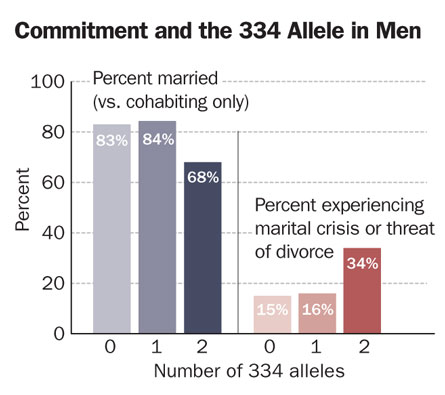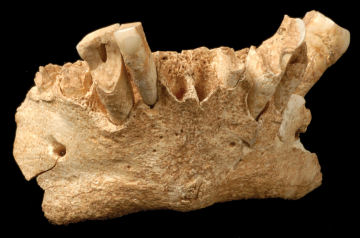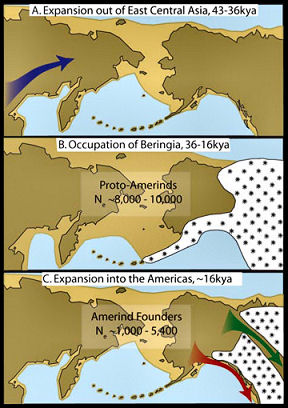
Grasping numbers without words
Studies challenge theories that link language and thought
Brazil’s Pirahã people can’t count on using words for the number one or for any other number to describe exact quantities, a team led by MIT cognitive scientist Edward Gibson suggests (SN: 7/19/08, p. 5). The denizens of the Amazon rainforest are the first group anywhere reported to lack an expression for the number one. But Pirahã adults can still identify the number of items placed in front of them by picking out a matching number of items, the team concludes.
“These results suggest that number words do not change our underlying representations of number, but instead are a cognitive technology for keeping track of the exact size of large sets over time and in different contexts,” says study coauthor Michael Frank.
During testing, questions arose about whether the Pirahã really possessed nonverbal knowledge of precise amounts or simply assumed that they should place an item next to each item set out by experimenters. Gibson’s team plans to explore that possibility. In the meantime, the researchers have found that English speakers who are temporarily distracted and unable to count perform as well as the Pirahã do on tests requiring identification of up to 10 items (SN: 8/16/08, p.12). That’s further evidence that basic numerical competence operates nonverbally, without the need for counting terms, Frank says.

Domain of the dead An investigation of England’s Stonehenge (shown above) reveals that the site served as a cemetery from its inception nearly 5,000 years ago until well after its large stones were put in place 500 years later (SN: 6/21/08, p. 13).
Shifting priorities Even the simplest multitasking disrupts a person’s ability to drive a car safely, scientists show (SN: 5/10/08, p. 7).
Toddlers triumphant Studies of toddlers indicate that basic mental capacities, such as perceiving and exploring objects, give rise to youngsters’ rapid grasp of object names (SN: 8/16/08, p. 12).

Commitment-phobia Scientists report a link between a common gene variant and some men’s inability to form strong romantic relationships and avoid marital conflict (SN: 9/27/08, p. 12).

Hobbit wars Anthropologists continue to debate whether hobbits that lived on an Indonesian island about 90,000 to 12,000 years ago are a separate species, Homo floresiensis, or just small Homo sapiens. A study shows the hobbits display no signs of several growth disorders that would result in an unusually small brain (SN: 3/15/08, p. 165), (SN: 5/10/08, p. 7), (SN Online: 8/26/08).
Deciphering DNA Researchers sequence the largest strand to date of Neandertal mitochondrial DNA, revealing that humans diverged from these relatives 660,000 years ago ( SN Online: 8/7/08 ).
European roots A fossil jaw and tooth found in a cave in Spain date to between 1.2 million and 1.1 million years ago, yielding the earliest known skeletal evidence of human ancestors in Europe (SN: 3/29/08, p. 196).
Rare mutations DNA mutations that probably disrupt brain development occur at relatively high rates in people with schizophrenia, according to two research teams (SN: 4/5/08, p. 222).
Body-swap illusion Using a new technique, investigators make volunteers feel that they’ve swapped bodies with a mannequin or another person (SN: 12/6/08, p. 16).
Honey of a discovery An ancient Israeli site yields the oldest known archaeological example of beekeeping, dating back to the time of King David and King Solomon (SN: 9/27/08, p. 11).
Gal gets hips A female Homo erectus who lived in Africa roughly 1 million years ago had hips wide enough to bear babies with brains nearly as big as those of newborn human infants, a pelvis fossil suggests (SN: 12/6/08, p. 14).
Life span drop In the 1980s and 1990s, life expectancy gains stalled in the United States and even reversed in some parts of the country, a trend unprecedented in modern societies (SN Online: 4/25/08).
No genes required A study of adopted and non-adopted teens uncovers the first direct evidence that environmental factors alone can promote depression in the children of depressed women (SN: 10/11/08, p. 9).

Travel delays Asian migrants first reached the northwestern edge of the Americas as early as 40,000 years ago but then had to wait at least 20,000 years before heading south, a new analysis finds (SN: 2/16/08, p. 102).







